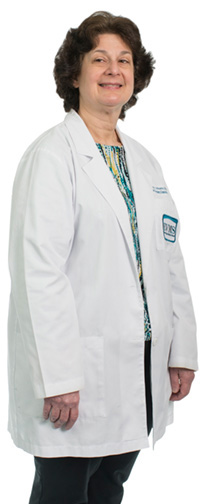Eastern Virginia Medical School Department of Psychiatry

Having enjoyed the research aspect of her undergraduate degree, she enrolled in Michigan State University to earn a master’s in microbiology. She again found herself working with plants, this time looking at nitrogen fixation on clover plants. It was interesting work, she says, “but I knew I didn’t want to spend my days working in a lab, with only a research assistant for company. I was really missing people.”
She left Michigan State with more than a master’s degree: it was there that she befriended several medical students (including one very special friend), and began to envision a career in medicine for herself. “It seemed like the perfect way to combine my love of science and my need to be with people,” she says. She applied to EVMS, and earned her medical degree in 1983. Dr. Urbano thought she wanted to practice family medicine, right up until she did a rotation in psychiatry. “We did it at the Naval Hospital in Portsmouth,” she explains. “We didn’t have a resident or an intern, so it was the students and the attending. We had the opportunity to do much more than we would have ordinarily and really got to know the patients. I knew I had found my specialty.” She completed a residency in psychiatry in 1987, and was Board certified in 1988.
As for that special friend she met in Michigan – Tom Manser – he remained in Michigan for his internship, but moved to Virginia for his residency at EVMS, and to propose. Today, Dr. Manser is Chief of the General Medicine Division at EVMS.
Dr. Urbano completed one year of internal medicine residency before starting her psychiatry residency. “It wasn’t unusual back then to enter psychiatry in the second year,” she says. “But after that first year, I realized it wasn’t what I wanted to be doing. I kept remembering something one of my favorite professors told me: ‘your goal is to get the patient’s story.’ And it’s true: by getting patients to tell their stories, you learn about their lives, and then you can find ways to create effective interventions to help them.”
Dr. Urbano acknowledges that there can be many layers of stories before a patient gets to the real story, depending on their problem. “People have a lot of defenses,” she says. “From a psychological perspective, the goal of the defenses is to keep emotional conflicts hidden away from consciousness, so they don’t disturb you too much. But they end up causing anxiety or anger or sadness, so it takes time to go back and find what the root cause of the feelings was.” In practice, Dr. Urbano says, we learn to ask the questions that help patients develop their stories.
Her tradition is psychodynamic psychotherapy, the oldest of the modern therapies. “It’s associated with Freud,” Dr. Urbano explains. “It’s helping patients look at relationships from childhood and learning how those relationships affect their current abilities as adults to form (and maintain) their own relationships.”
The goal, she says, is that when patients learn to explore both past events and feelings, they can connect them to their current life situations, which can result in changes in personality or behavior. Then they can make better choices, or have more options in the present.
When she’s not counseling patients, Dr. Urbano is teaching (she’s a full professor at EVMS), publishing (she’s led or been secondary author of a number of medical publications), participating in funded and unfunded research and training grants, or giving presentations both locally and across the country.
Many of these activities are based on the topic of Autism Spectrum Disorder. “When Dr. (Stephen)Deutsch MD, PhD came to EVMS in 2009 as our chairman, he was doing research in autism,” Dr. Urbano says. “I was interested because there are individuals with ASD in my family. At the time, very little attention was being paid specifically to the older adolescent/young adult ASD population.”
Dr. Deutsch was working with a strain of mice that don’t interact as normal mice do – just as people with autism often avoid social contact with other people. “He had tested a tuberculosis drug that had been found to change social behavior in these mice,” Dr. Urbano explains. “We received a grant from the Hampton Roads Community Foundation to fund the study on young adults with autism. The drug (D-cycloserine) was shown to be effective in improving stereotypic symptoms and increasing social behaviors in older adolescents and young adults with ASD. It was also safe and well tolerated. It was very exciting.”
It also represents a professional frustration. “One of the challenges we face in studying autism is finding the resources to pursue scientific avenues that we have evidentiary reason to believe will be fruitful,” she says. “In academic research, it always comes down to a question of resources. It’s particularly vexing because we’re dealing with such young patients, the adolescents and young adults, at a critical time in their lives.”

